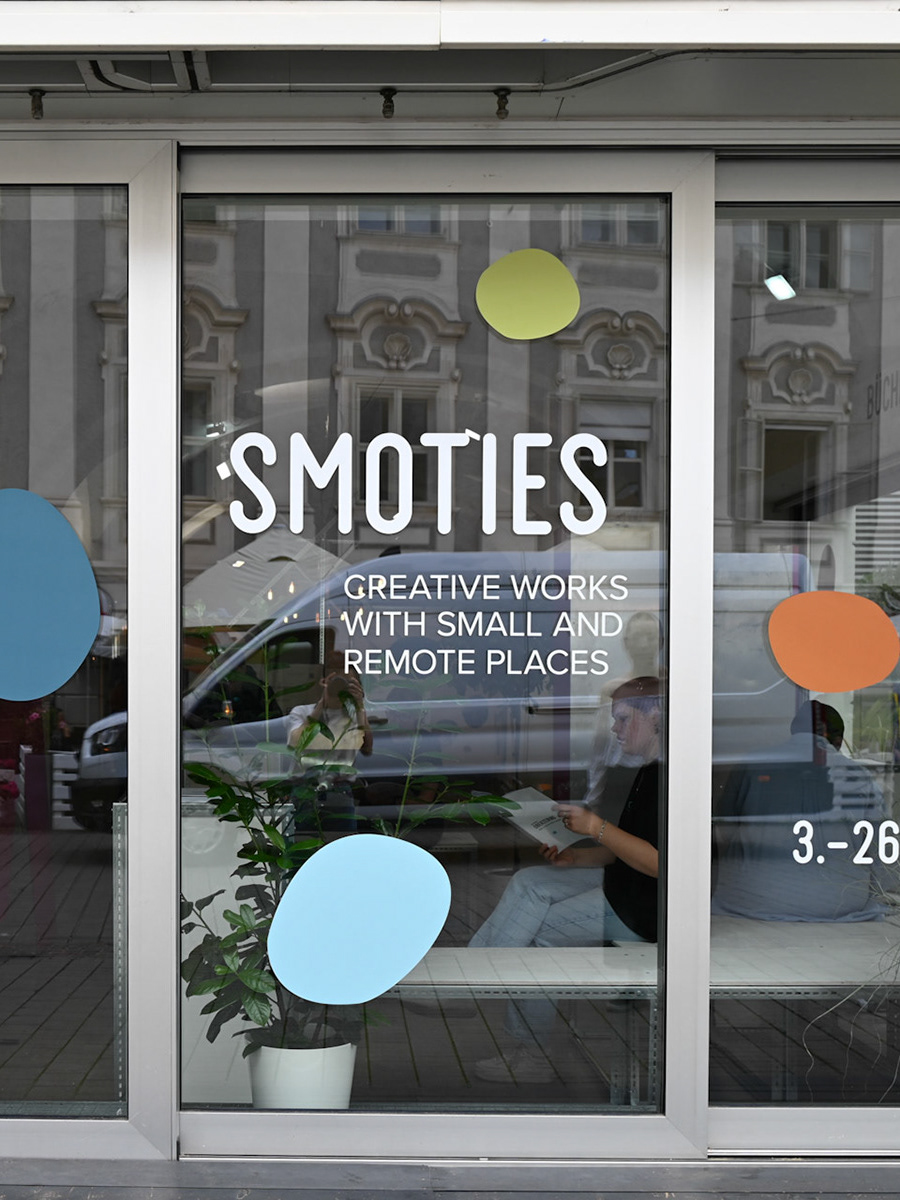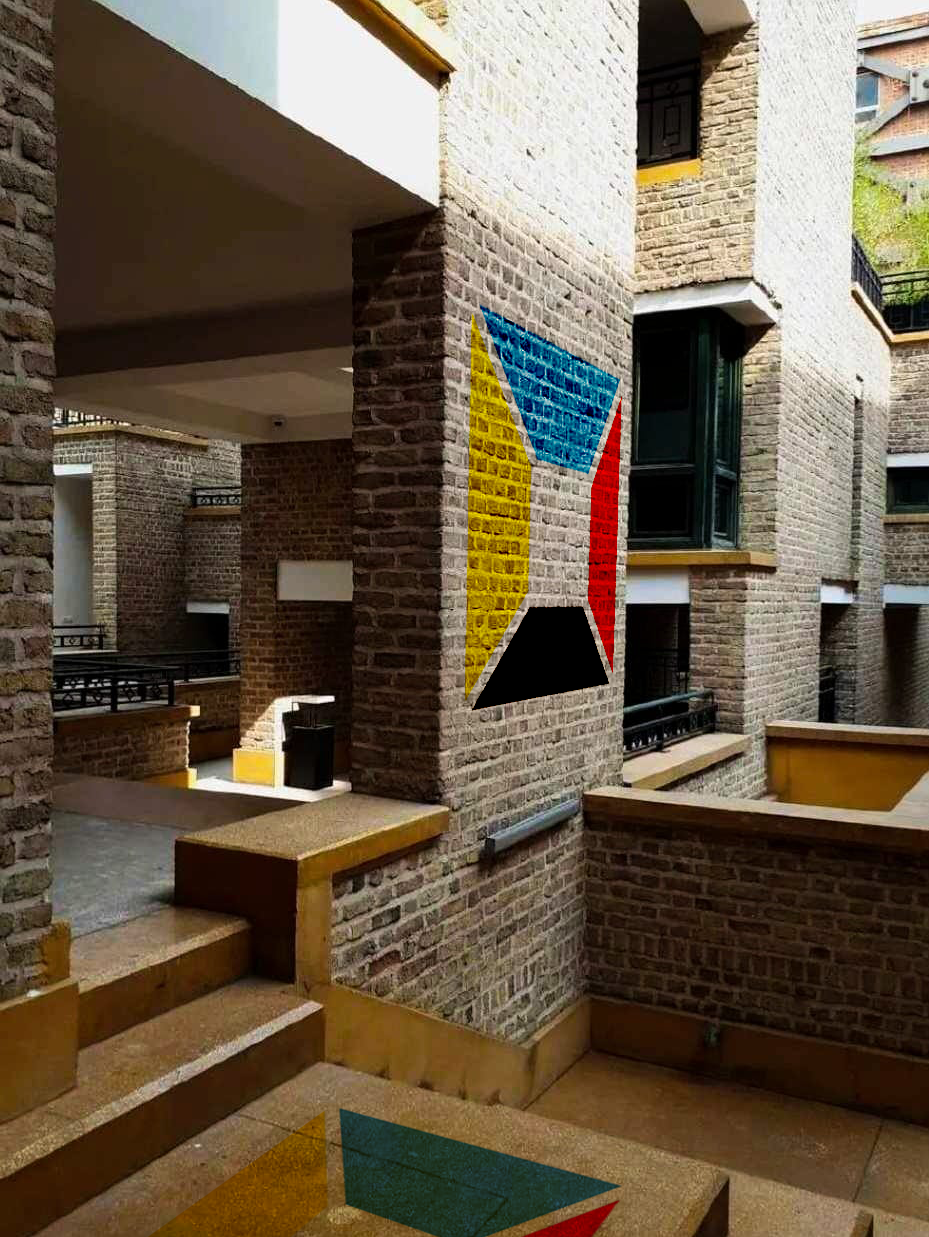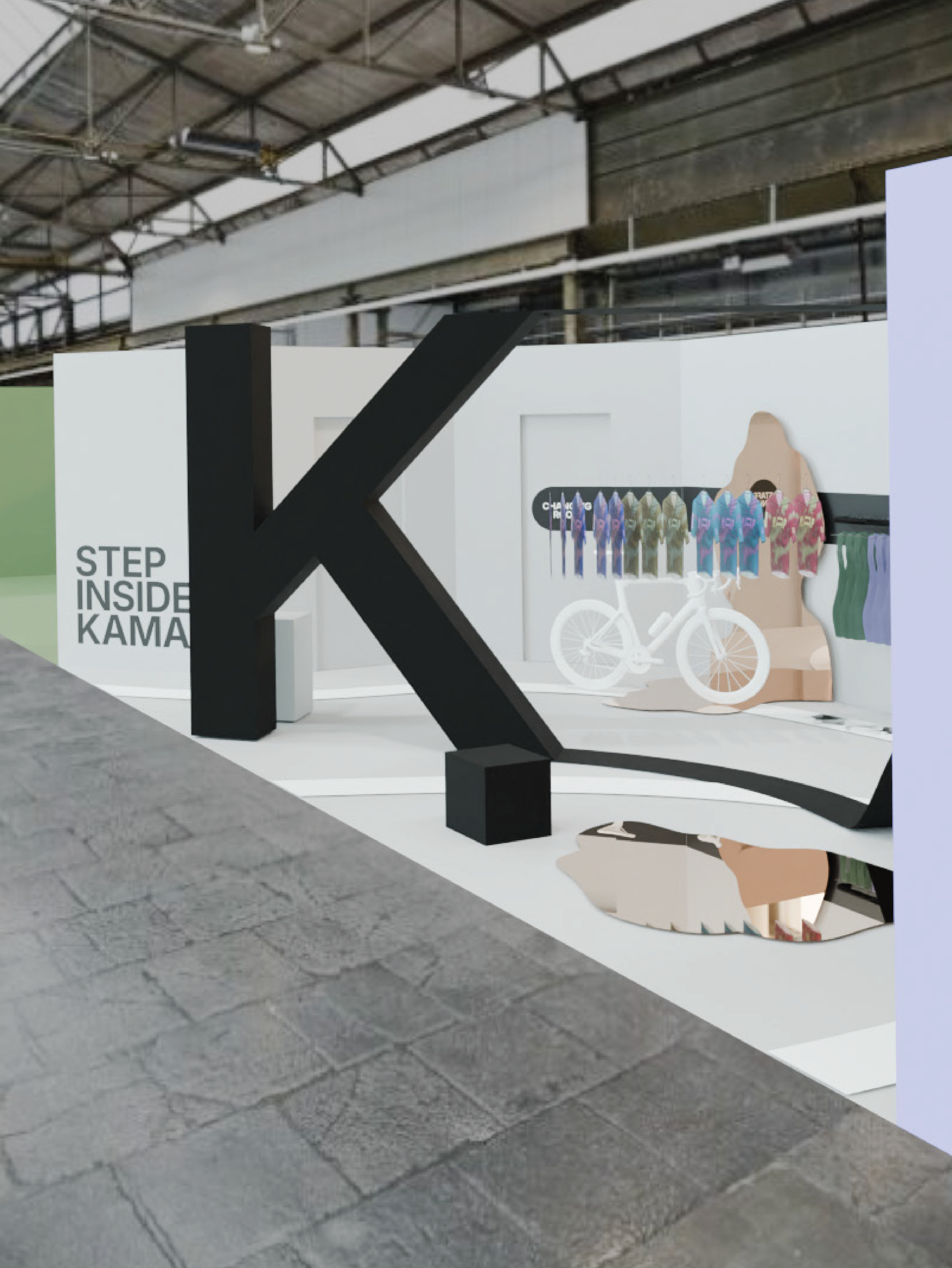This university project, completed in the first semester of the Exhibition Design program, involved designing an exhibition concept based on the literature Atlas der Zukunft. Using this source, I developed a concept addressing inequality and selected Kunsthaus as the location, aligning it with the themes of bridging divisions and fostering dialogue. The project was inclusively designed to engage a diverse audience.
The key visual encapsulates the theme of inequality, with intersecting lines and circular shapes symbolizing connections, barriers, and the complexity of the subject. The overlapping elements reflect the idea of bridging divides and fostering dialogue. The bold color palette, featuring blue, orange, yellow, and gray, adds a dynamic and modern touch, aligning with the exhibition's focus on both historical and contemporary challenges. This design serves as the visual centerpiece of the exhibition, reinforcing its core narrative.
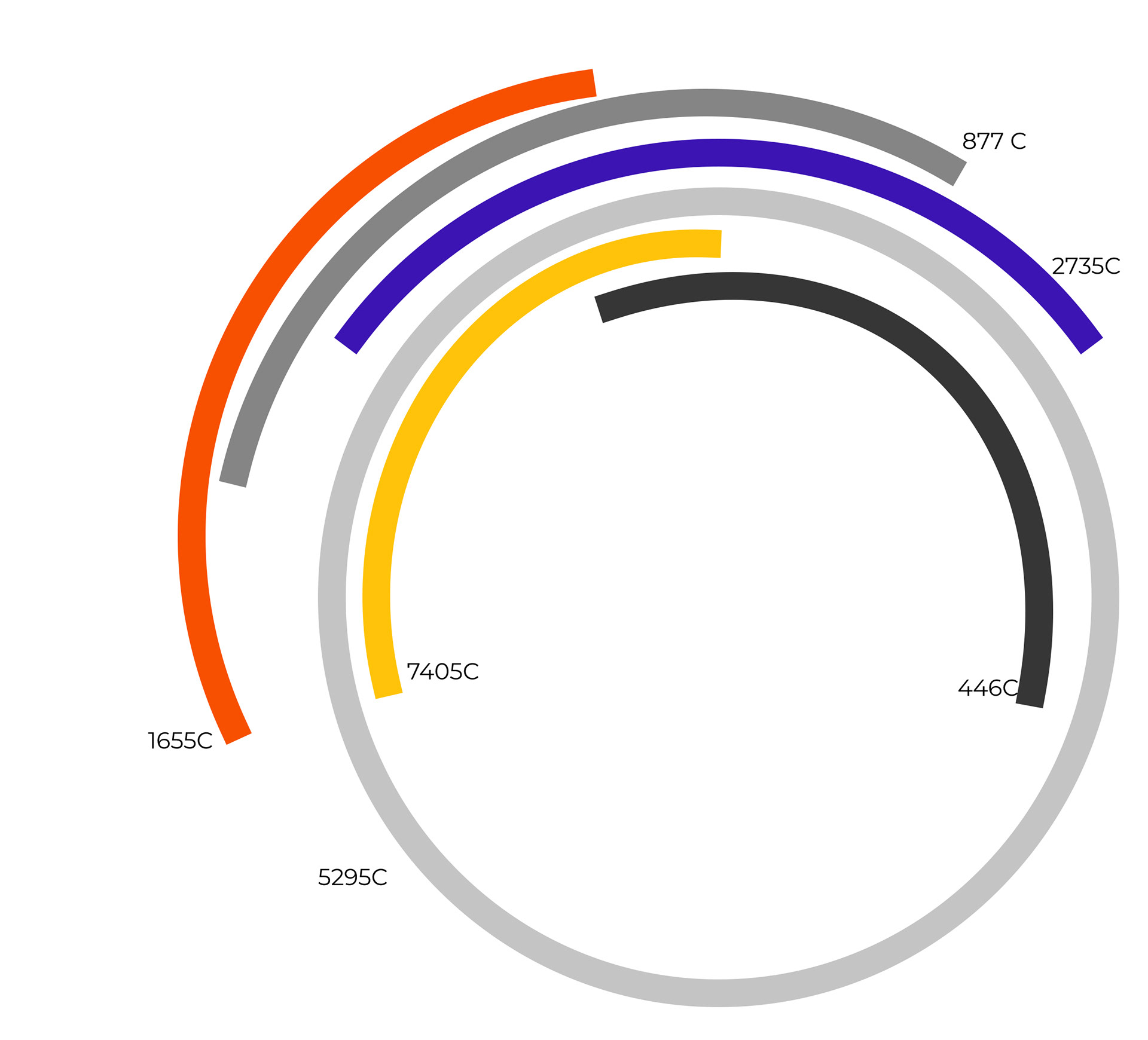
Visitor Journey
Acoustic Feedback Loop
In this exhibition, visitors co-create an evolving narrative through their voices and interactions, captured by an acoustic feedback system that shapes a dynamic soundscape. Each contribution becomes part of a recurring audio composition, symbolizing collective influence. This immersive experience connects individuals to the broader human story, from cosmic origins to the present, as history is continuously reshaped by the voices of participants.
Passport
In this experience, the ticket transforms into a "passport," guiding visitors on an extraordinary journey. Instead of a standard ticket, the passport assigns a random birthplace, revealing facts about a fictional country and highlighting the varying living conditions people experience based on where they are born. As visitors scan their passport at different stations, they gain intriguing insights, making the visit both educational and enriching. The experience illustrates how being born in different countries leads to diverse knowledge resources, encouraging reflection on the impact of geographical differences.
At the Kunsthaus, ramps serve as access paths to the exhibition level. On these ramps, the word "Bridge" is written, symbolically representing the transition from one area to another. They not only facilitate physical access to the exhibition but also act as a metaphorical connection between themes or between visitors and the artworks.
"Barrier" is prominently displayed on a wall before the exhibition area. This inscription serves as a striking introduction to the exhibition's theme, encouraging visitors to reflect on the meaning and impact of barriers in various contexts. The exhibition is divided into three main sections: "Past," "Present," and "A Bridge to the Future."
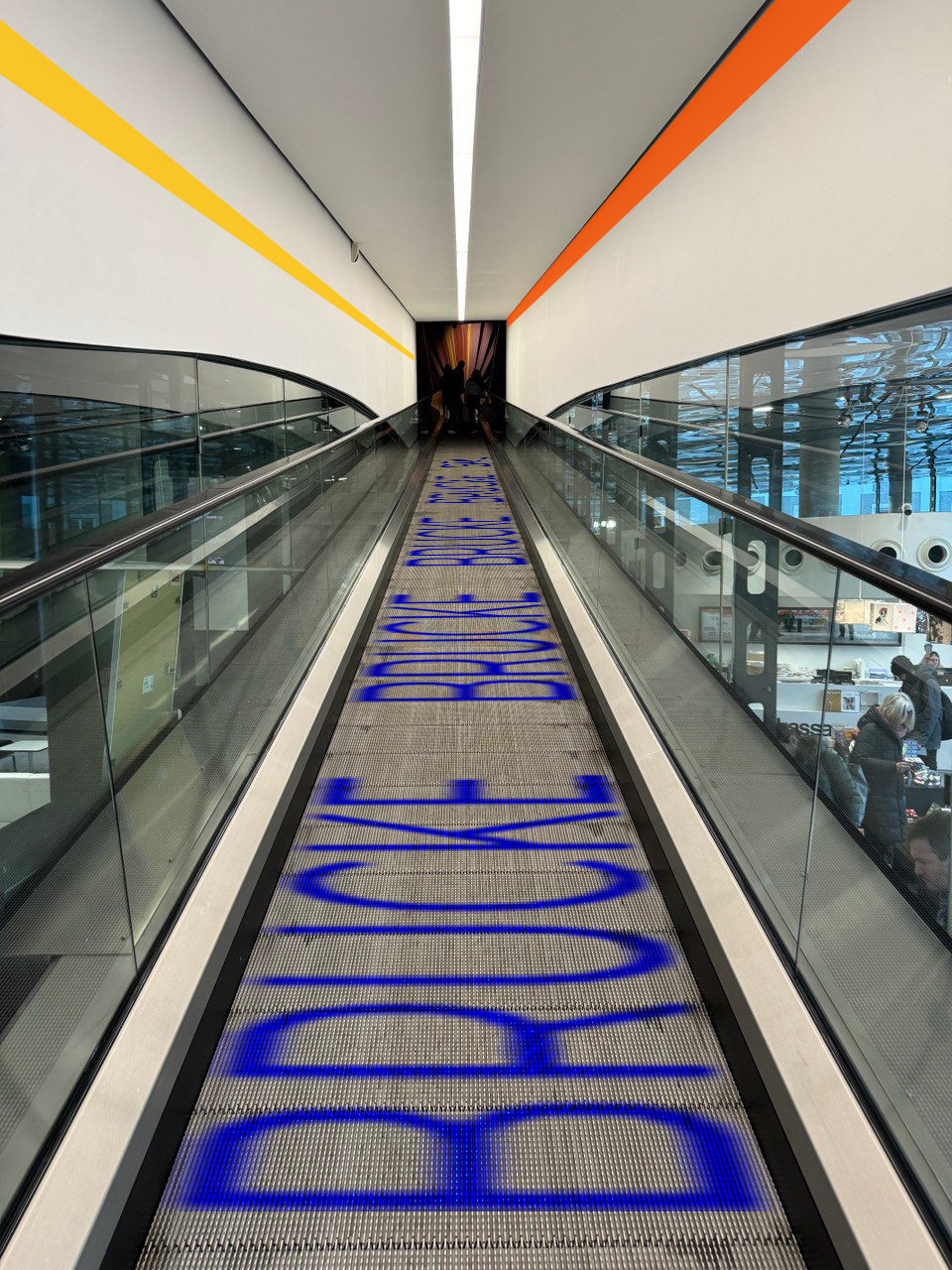
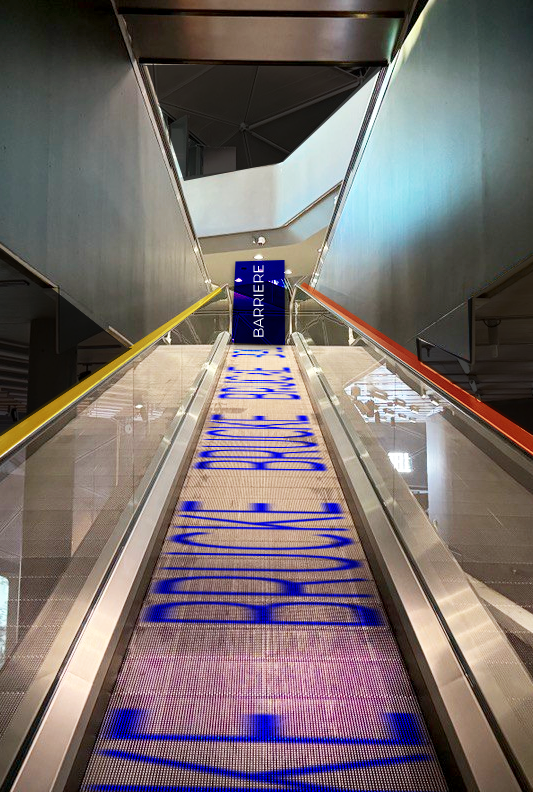
Past
No Opportunity
In the entrance area, visitors are provided with an introduction to the exhibition, offering insights into the theme of inequality in the "Atlas of the Future." then Visitors encounter famous artworks alongside empty canvases. The famous works represent artists who have gained recognition, while the empty canvases symbolize the countless others who never had the chance to be acknowledged. This artistic representation serves as a poignant reminder of the unequal distribution of opportunities, with many talented artists remaining in the shadows.
Income
Visitors scan the tickets and view a time travel experience on a screen, traveling through three different eras (1800, 1975, 2019) in randomly selected countries. They learn about their income levels in comparison to other countries and the distance to the poverty line.
For example: It is the year 1800, you live in a small village in Germany, and your income is 150 Reichstaler. In the chart of global income distribution, you are positioned at this point.
Today
News
Headlines from various countries are randomly displayed on a wall through a projector for visitors. This interactive presentation illustrates that people in different parts of the world experience different situations and emotions. By confronting visitors with a variety of global news, the diversity of global life experiences is highlighted.
In the next section of the exhibition, it is shown how these political and social differences influence artworks. This offers visitors a deeper insight into how societal circumstances shape artistic creation and the selection of themes.
Artists and Artworks
Heba Y. Amin
Collection: The Act of Remembering
A series that explores the impact of war and collective memory.
Collection: The Act of Remembering
A series that explores the impact of war and collective memory.
Shepard Fairey
Collection: Damaged Stencil Series
Iconic works that combine street art activism with entrepreneurial spirit.
Collection: Damaged Stencil Series
Iconic works that combine street art activism with entrepreneurial spirit.
JR (Jean-René)
Artworks: Women Life Freedom, Tehachapi, and Migrants
Exploration of themes such as freedom, migration, and the role of women in society.
Artworks: Women Life Freedom, Tehachapi, and Migrants
Exploration of themes such as freedom, migration, and the role of women in society.
Gender Discrimination
Visitors have the opportunity to scan their ticket next to an interactive world map. After scanning, their position regarding gender discrimination is automatically projected onto the map, based on the country randomly assigned to them through their ticket. This projection vividly illustrates the varying conditions of gender equality worldwide. It highlights the progress or challenges each country faces in the fight against gender discrimination. Through this interactive display, visitors gain a deeper understanding of the global dimension of this social issue.
Inequality in the Dark
Visitors will enter a closed room and scan their passports again. The round ceiling lights will adjust, turning on and off as needed to simulate the amount of light required in the hypothetical hometown they have been assigned.
A Bridge to the Future
What if...?
A room with a transparent screen is located on the upper level of the Kunsthaus. Here, visitors are invited to use the AI engine “Mid-Journey” to design different scenarios that could impact the physical situation of a city. A camera at the window captures the current view in real-time. Every time a phrase like “What if...” is completed, the Mid-Journey engine generates a new image, presenting the view from the Kunsthaus in an innovative way. This approach allows visitors to imagine various scenarios that could influence the physical structure of a city. For example: What if everyone had the same income? In this case, entirely different types of houses could emerge. The engine is programmed to filter out prohibited and harmful topics, ensuring that the generated content meets the standards of appropriateness for a public exhibition.
After the visit
Website
After their visit, visitors can find additional information about the various countries featured in the exhibition on the website. They can also view the AI-generated results of their visit. These results, created by the “Mid-Journey” AI engine, offer creative interpretations and visualizations based on the inputs from visitors. The website serves as a supplementary resource to deepen the understanding of the exhibition's global themes.
Museum Shop
The museum shop offers a variety of items, including the book Atlas of the Future, which provides further information on the exhibition's themes. Visitors can also purchase custom-made sound files, as well as fabric bags and postcards featuring motifs from the showcased artworks, enhancing the exhibition experience.
